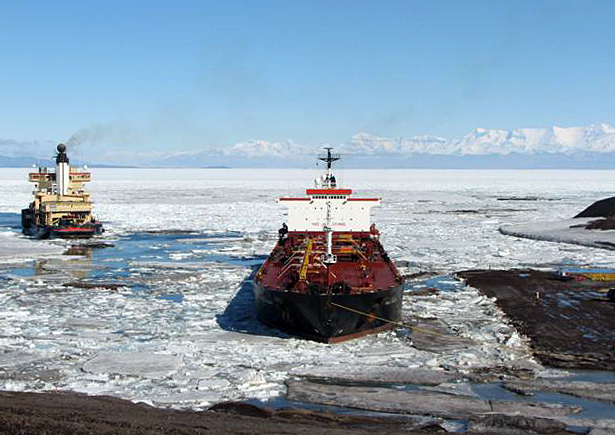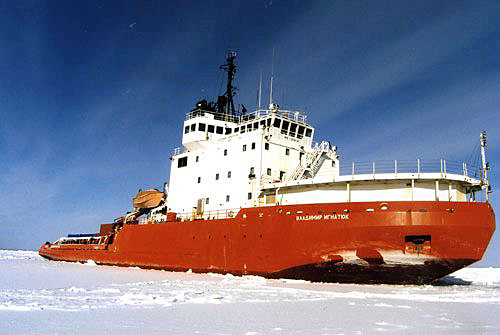Breaking newsNSF secures Russian icebreaker to help resupply McMurdo for 2011-12 seasonPosted August 26, 2011
The National Science Foundation (NSF) NSF signed a one-year contract, with an option for additional years, with the Murmansk Shipping Co. to use the Canadian-built icebreaker, Vladimir Ignatyuk, according to an NSF press release The USAP requires the services of an icebreaker each year to cut a channel through the annual sea ice that fronts its largest research base at McMurdo Station The 5-million-gallon fuel resupply is particularly critical to support the science missions based out of McMurdo and South Pole For decades, U.S. Coast Guard For the past several years, the NSF had contracted with the Swedish government for the icebreaker Oden 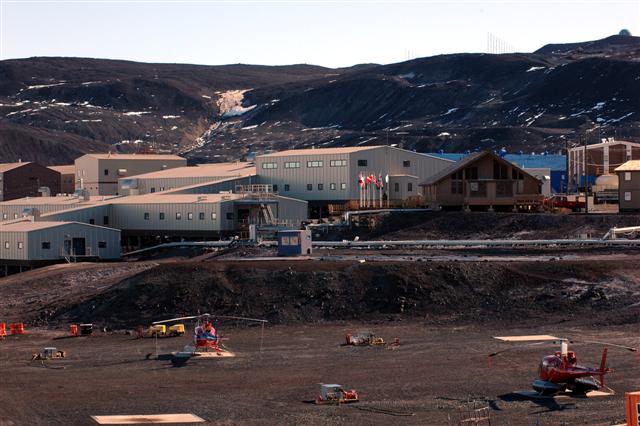
Photo Credit: Peter Rejcek
Helicopters sit in front of McMurdo Station's science and administrative buildings.
“With Oden in the Baltic Sea, it is likely that these delays could have been avoided,” Swedish Minister of Foreign Affairs Carl Bildt wrote in a July 5 letter to U.S. Secretary of State Hillary Clinton The absence of an icebreaker would not only affect the USAP. Antarctica New Zealand However, despite the announcement of a deal to secure an icebreaker, the NSF has indicated it may still curtail some research projects to conserve fuel to avoid a future situation that would require even more severe austerity measures. That news came in a letter 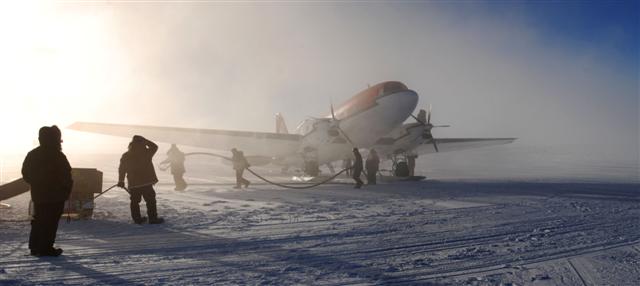
Photo Credit: Dr. Ella Derbyshire/Antarctic Photo Library
Personnel refuel a plane at South Pole that is used for deep-field missions.
“This year’s experience brought home the importance of increasing our contingency fuel supply at McMurdo over the next several years, partly via increased shipments and partly by reducing fuel usage,” Erb wrote. “While these actions could result in delays to operational or science projects in the near term, we will make every effort to minimize disruptions.” Erb went on to write that NSF OPP would analyze resources and requirements over the next few weeks “in order to develop plans for implementing a successful austral summer season.” The summer field season at McMurdo doesn’t officially begin until early October. However, six early flights by the U.S. Air Force from Joint Base Lewis-McChord USAP’s Palmer Station There are nearly 150 science projects currently scheduled for the 2011-12 season out of the three research stations, two research vessels and field camps across the continent and nearby islands.
|

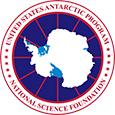

For USAP Participants |
For The Public |
For Researchers and EducatorsContact UsU.S. National Science FoundationOffice of Polar Programs Geosciences Directorate 2415 Eisenhower Avenue, Suite W7100 Alexandria, VA 22314 Sign up for the NSF Office of Polar Programs newsletter and events. Feedback Form |

